 Small
Rocky Planet Discovered in our Galaxy
Small
Rocky Planet Discovered in our Galaxy
Press
Release (MS word)
Media Resources
![]()
The PLANET group,
working in collaboration with the OGLE and MOA microlensing groups has recently
announced the detection by microlensing of the smallest ever cool, rocky
exo-planet orbiting a normal star. The details of this research are published
in the 25 January issue of Nature magazine.
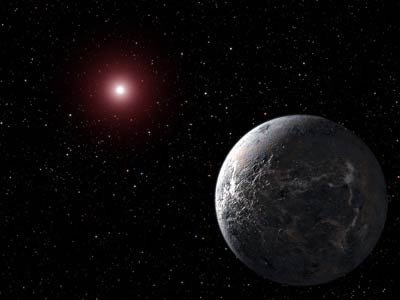 The planet named
OGLE-2005-BLG-0390Lb is only 5.5 times the mass of the Earth and orbits 3
times the Earth-Sun distance away from its parent star. Its orbital period is
11 Earth years.
The planet named
OGLE-2005-BLG-0390Lb is only 5.5 times the mass of the Earth and orbits 3
times the Earth-Sun distance away from its parent star. Its orbital period is
11 Earth years.
The parent star is a M dwarf of ~0.2 solar masses located in Sagittarius about 22,000 light years from Earth. M-dwarfs are much cooler than the Sun, and are the most common stars in our galaxy. Since the parent star is cool and faint the planet is much colder than Earth with an estimated surface temperature of -225 Celsius. This temperature it is too cold to support life. At 5.5 Earth masses this planet is too small to be a gas giant like Jupiter and is probably made up of a combination of rock and ice like a super sized Pluto or Europa (large moon of Jupiter). Alternatively the planet could be mostly rock like the Earth. The surface gravity is up to 1.7 times that on Earth.
Why is this discovery so important?
This is the first exo-planet which is like the rocky/icy planets in our solar system.
So far three exoplanets have been detected by microlensing - the first two were gas giants like Jupiter. Planets of 5 Earth mass are very difficult to detect so finding one small planet among three suggests that rocky/icy planets are common - there must be millions of them in our Galaxy
This detection is the first evidence in support of the core accretion theory of planetary system formation. In this theory solid "planetisimals" form from rock and ice and then grow through collisions into a planetary-sized objects. This model favours the formation of Earth to Neptune mass planets 1-10 Earth-Sun distances away from the infant star. If they are sufficiently massive they accumulate gas from the solar nebula to form giant planets like Jupiter.
We have now demonstrated that microlensing can detect planets down to near Earth size. We have the opportunity in the next few years to determine the distribution in mass and orbital radius of solar system like planets
Review of exo-planets
To date 169 exo-planets have been discovered and the number is rising fast
Mostly they are Jupiter size or larger and very close to their parent star - “hot Jupiters”
A few have masses down to ~10 Earth mass but are very
close to their parent star - well inside Mercury’s orbital distance. The graph
below shows the known exo-planets. This is NOT a true representation of the
properties of exo-planets - it reflects the limitations of the detection
techniques. Note in particular that no exact analogues of the solar system
rocky planets have yet been discovered although our planet
(OGLE-2005-BLG-390Lb) is closest in nature to the inner solar system rocky
planets.
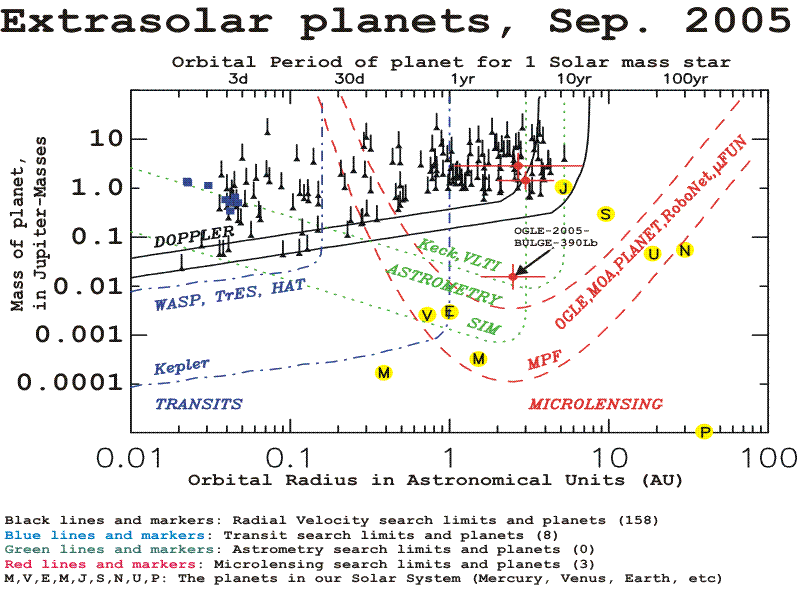
The currently very successful ground based Doppler (radial velocity) and Transit methods are never likely to have the sensitivity to detect analogues of Earth and the other inner planets. In about 5 years time, however, the Kepler transit method spacecraft is expected to be finding Earth analogues followed a few years later by the SIM astrometry spacecraft. The limits on microlensing are uncertain but recent evidence (Udalski et al, 2005, ApJ, 628, L109) indicates that Venus, Earth, Mars and Neptune analogues (as well as gas giants) will be detectable by ground based microlensing surveys.
How did we find it?
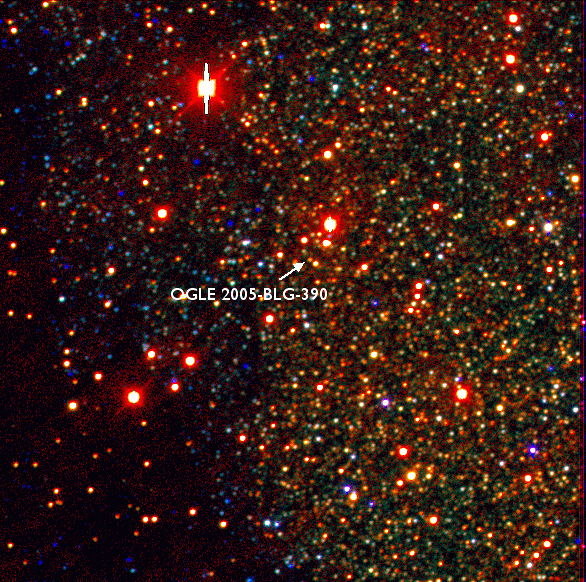 Microlensing
occurs when a foreground star passes in front of a background star. This is a
very rare phenomenon - less than one star in one million is being microlensed
at any one time even in the crowded Galactic centre region.
Microlensing
occurs when a foreground star passes in front of a background star. This is a
very rare phenomenon - less than one star in one million is being microlensed
at any one time even in the crowded Galactic centre region.
When this occurs the foreground star acts as a
gravitational lens magnifying the light from the background star
The brightening, peaking and fading leads to a characteristic bell shaped light curve, which typically lasts a few weeks.
If the foreground (lens) star has a planet a short lived (hours to days) “bump” can occur in the light curve
The OGLE and MOA microlensing survey teams monitor millions of stars towards the Galactic Centre each night and issue alerts when a microlensing event is detected. More than 500 alerts are issued each year.
The PLANET collaboration monitors the brightness of selected microlensing events continuously (24 hours per day) using a network of telescopes in the Southern hemisphere. PLANET works in close collaboration with the UK based Robo-net collaboration which uses automated telescopes in the Canary Islands and Hawaii.
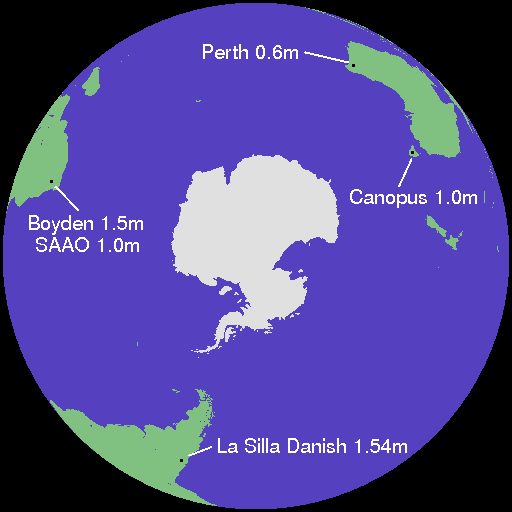
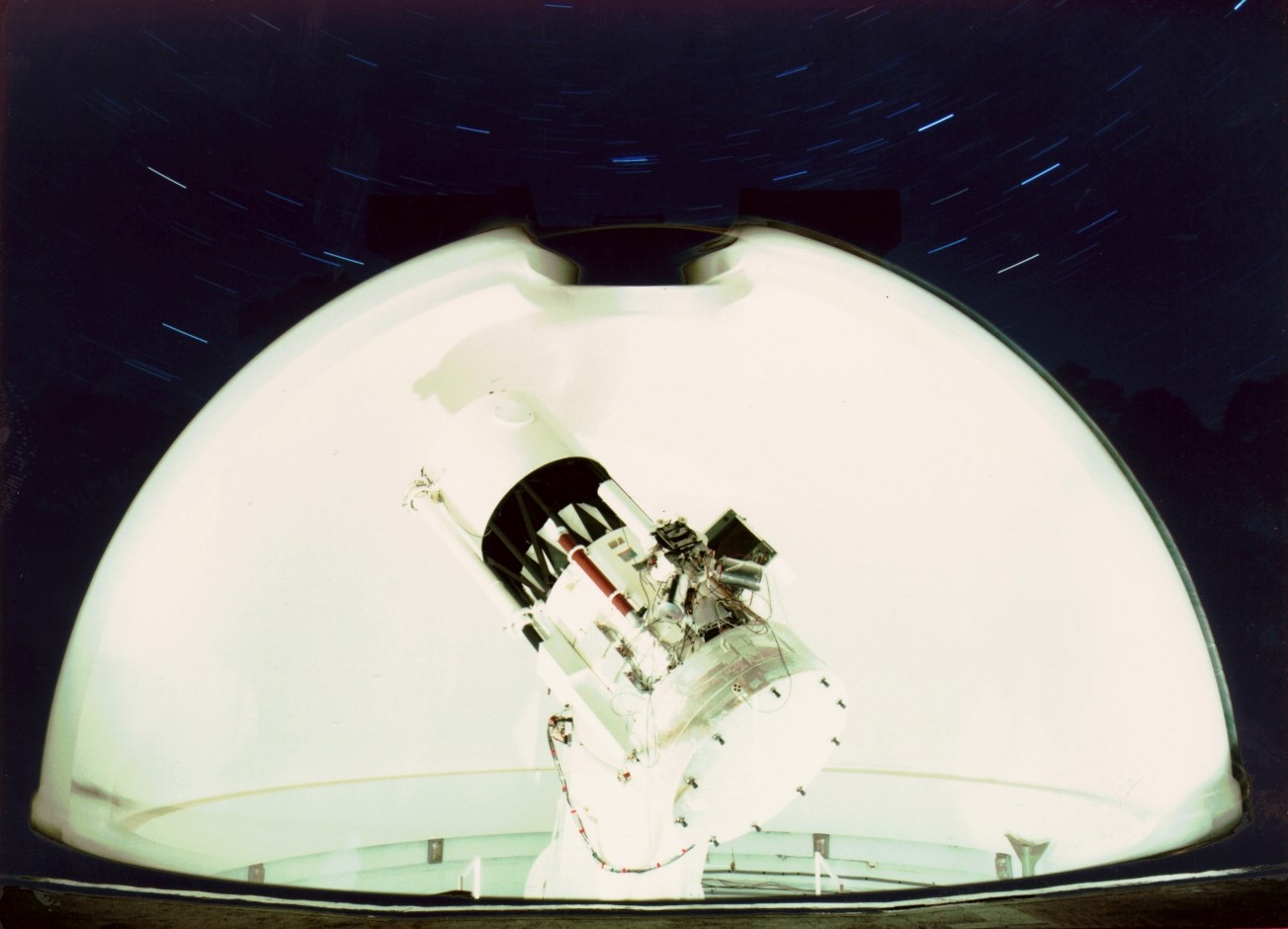
The OGLE-2005-BLG-390 event was alerted by OGLE in
early July, 2005 and a planetary “bump” was detected on August 10. Data
over the planetary deviation were obtained by the PLANET Chilean and Perth
telescopes and confirmed by OGLE and MOA observations.
Detailed mathematical modelling was then used to estimate the planet
properties. These depend on several factors (the lens star mass and distance),
which are currently poorly determined - hence the large range in estimated mass
and orbital radius. These uncertainties will be reduced in a few years when the
lens and source stars can be separately resolved.
What are the implications for the future?
Microlensing will, for the next few years, remain the only technique able to detect analogues of the rocky/icy planets Venus, Earth, Mars and probably Neptune
PLANET intends to play a leading role in this venture - and to look for gas giants as well.
We are currently planning improvements to our methods and technology in order increase the probability of obtaining a good sample of Earth-mass planets. By the end of this decade we expect to have a good measure of the properties and frequency of exo-planets similar to those in our Solar System. This will provide an essential foundation for theories of planetary system formation and the quest to discover whether there is life elsewhere in the universe.
![]()
[ Optical and X-ray Astronomy home page ]